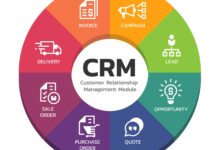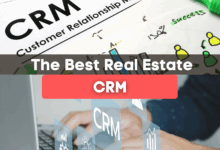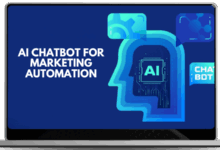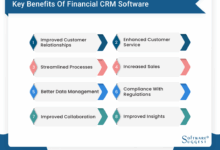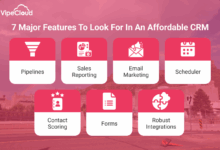Best Enterprise CRM Solutions – Streamlining Business Operations With Efficiency
Best Enterprise CRM Solutions are a vital component for large organizations looking to enhance customer relationships and optimize their operations. From integration capabilities to customization options, these solutions offer a comprehensive approach to CRM.
Overview of Enterprise CRM Solutions
Enterprise CRM solutions are software platforms designed to help large organizations manage and analyze customer interactions and data throughout the customer lifecycle. These solutions play a crucial role in improving customer relationships, enhancing customer satisfaction, and driving sales growth.
Key Features and Benefits of Enterprise CRM Solutions
Enterprise CRM solutions offer a wide range of features and benefits that can greatly benefit organizations. Some of the key features include:
- Centralized Customer Database: All customer information is stored in one place, making it easy to access and manage.
- Automated Marketing Campaigns: CRM solutions enable organizations to automate marketing campaigns and target customers with personalized messages.
- Sales Forecasting: By analyzing customer data, organizations can predict future sales trends and make informed decisions.
- Customer Service Management: CRM solutions help organizations track customer interactions and provide timely support.
Some of the benefits of using Enterprise CRM solutions include:
- Improved Customer Relationships: By having access to comprehensive customer data, organizations can personalize their interactions and provide better service.
- Increased Efficiency: CRM solutions streamline processes and automate repetitive tasks, allowing employees to focus on high-value activities.
- Enhanced Reporting and Analytics: Organizations can generate detailed reports and gain insights into customer behavior, helping them make data-driven decisions.
Examples of Well-Known Enterprise CRM Solution Providers
| CRM Solution Provider | Description |
|---|---|
| Salesforce | A cloud-based CRM platform that offers a wide range of features for sales, marketing, and customer service. |
| Microsoft Dynamics 365 | An integrated CRM and ERP solution that helps organizations manage customer relationships and business operations. |
| Oracle CRM | A comprehensive CRM solution that helps organizations drive sales, marketing, and customer service excellence. |
Factors to Consider when Choosing an Enterprise CRM
When selecting an Enterprise CRM solution, organizations need to consider several key factors to ensure they choose the right system that aligns with their business needs and goals.
Types of Enterprise CRM Solutions
There are various types of Enterprise CRM solutions available in the market, each catering to different business requirements. Some common types include:
- On-Premise CRM: This type of CRM solution requires organizations to host the software on their own servers and manage it internally. It offers more control and customization but requires higher upfront costs.
- Cloud-Based CRM: Cloud-based CRM solutions are hosted on the vendor’s servers and accessed through the internet. They are more flexible, scalable, and cost-effective, making them popular among businesses of all sizes.
- Industry-Specific CRM: These CRM solutions are tailored to meet the unique needs of specific industries, providing specialized features and functionalities.
Importance of Scalability and Customization
Scalability and customization play a crucial role in the success of an Enterprise CRM solution. Organizations should look for a CRM system that can grow with their business and adapt to changing needs over time. The ability to customize the CRM to suit specific workflows and processes ensures that it aligns perfectly with the organization’s operations, maximizing efficiency and productivity.
Overall, when choosing an Enterprise CRM solution, organizations should carefully evaluate their requirements, budget, integration capabilities, and long-term goals to select a system that best fits their needs and helps drive business growth and success.
Integration Capabilities with Existing Systems
Integration capabilities with existing systems are crucial for Enterprise CRM solutions to ensure seamless operations and data flow across the organization.
Common Integrations
- Integration with Email Marketing Platforms
- Integration with Accounting Software
- Integration with E-commerce Platforms
Challenges and Benefits
- Challenges: Data inconsistency, complex mapping, and potential downtime during integration.
- Benefits: Improved efficiency, better decision-making with integrated data, and enhanced customer experience.
Setting up Integration
- Evaluate existing systems and identify integration points.
- Select the appropriate integration method (API-based, middleware, custom code).
- Map data fields and ensure compatibility between systems.
Role of APIs
APIs act as bridges between different software systems, enabling seamless communication and data exchange.
Custom vs. Pre-built Integration
- Custom Integration: Tailored to specific needs but requires more time and resources.
- Pre-built Integration: Faster implementation but may lack customization options.
Security Measures
- Implement data encryption and secure authentication protocols.
- Regularly monitor and audit data transfers for any vulnerabilities.
Scalability Considerations
- Ensure that integrations can accommodate growing data volumes and user interactions.
- Opt for scalable solutions that can adapt to changing business needs over time.
Customization Options for Enterprise CRM Solutions
Customization plays a vital role in tailoring Enterprise CRM solutions to meet specific business needs. Let’s explore the level of customization options available and its impact on user adoption and overall effectiveness.
Key Features for Customization
- Custom Fields: Businesses can create custom fields to capture unique data points relevant to their operations.
- Workflow Automation: Customize workflows to streamline processes and automate repetitive tasks.
- Reports and Dashboards: Tailor reports and dashboards to display key metrics and insights specific to your business.
Levels of Customization
- Basic Customization: Involves simple modifications like adding custom fields or changing layouts.
- Intermediate Customization: Includes workflow automation and personalized dashboards.
- Advanced Customization: Enables complex changes like API integrations and custom modules development.
In-built vs. Third-party Customization Tools
While in-built tools offer convenience and seamless integration, third-party integrations provide advanced customization options. The choice depends on the complexity of customization needed and the budget allocated.
Scalability and Performance
Heavy customization can impact the scalability and performance of CRM systems. To maintain optimal performance, businesses should regularly review and optimize customizations, invest in system monitoring tools, and consider cloud-based solutions for enhanced scalability.
Data Security and Compliance Features
Data security is a critical aspect of Enterprise CRM solutions, especially considering the sensitive nature of customer data. Compliance with regulations like GDPR is essential to ensure the protection of user information and maintain trust. Top Enterprise CRM solution providers implement various security measures to safeguard data and prevent unauthorized access.
Critical Data Security Features
- Role-based access control to restrict user permissions based on their roles within the organization.
- Encryption of data both at rest and in transit to protect it from unauthorized access.
- Regular security audits and monitoring to identify and address potential vulnerabilities.
- Audit trails to track user activities and changes made to the CRM system.
Importance of Compliance with GDPR
- GDPR compliance ensures that customer data is handled responsibly and transparently, enhancing trust and credibility.
- It requires organizations to obtain explicit consent for data processing and provides individuals with rights over their personal data.
Security Measures by Top Enterprise CRM Solution Providers
- Two-factor authentication: Users are required to provide a second form of verification, such as a code sent to their mobile device, in addition to their password.
- Data encryption: Sensitive data is encrypted using advanced algorithms to prevent unauthorized access.
- Firewalls and intrusion detection systems: These tools help prevent and detect unauthorized access attempts.
Setting Up Two-Factor Authentication
- Access the CRM system settings and locate the security or authentication section.
- Enable two-factor authentication and choose the verification method (e.g., SMS, app-generated codes).
- Users will be prompted to set up the second factor during their next login attempt.
Encrypting Sensitive Data within CRM Platforms
Encrypting sensitive data involves converting it into a code that can only be accessed with a decryption key, ensuring that even if the data is compromised, it remains unreadable to unauthorized users.
Cloud-Based CRM Solutions vs. On-Premise CRM Solutions
- Cloud-based CRM solutions often provide automatic updates and security patches, reducing the burden on the organization to maintain security measures.
- On-premise CRM solutions give organizations more control over their data security but require dedicated IT resources for maintenance and updates.
Key Data Security Regulations for CRM Systems Worldwide
| Region | Key Data Security Regulations |
|---|---|
| Europe (EU) | General Data Protection Regulation (GDPR) |
| United States | Health Insurance Portability and Accountability Act (HIPAA) |
| Canada | Personal Information Protection and Electronic Documents Act (PIPEDA) |
User Interface and User Experience
User Interface (UI) and User Experience (UX) play a crucial role in the success of Enterprise CRM solutions. A user-friendly interface can significantly impact how efficiently employees can use the CRM system, leading to increased productivity and satisfaction.
Significance of User-Friendly Interface
A user-friendly interface in Enterprise CRM solutions is essential because it ensures that employees can easily navigate the system, access the information they need, and perform tasks without unnecessary complications. Intuitive design, clear layouts, and interactive elements contribute to a positive user experience, reducing the learning curve and improving overall efficiency.
- Clear navigation menus and icons simplify the user journey within the CRM system.
- Customizable dashboards allow users to personalize their workspace and access key information at a glance.
- Responsive design ensures that the CRM interface is accessible across devices, enhancing flexibility for remote or mobile users.
Comparison of CRM Interfaces
Different CRM interfaces vary in terms of layout, design elements, and customization options, impacting the overall user experience. By comparing these interfaces, organizations can identify which CRM solution aligns best with their specific needs and user preferences.
- Some CRM systems offer a more visually appealing interface with modern design elements, while others focus on simplicity and functionality.
- Customization options such as color schemes, layout configurations, and widget placement can influence user satisfaction and productivity.
- Integration with third-party apps and tools can enhance the CRM interface’s capabilities, providing a seamless user experience.
Training and Onboarding for Smooth User Experience
Effective training and onboarding processes are essential for ensuring a smooth user experience with Enterprise CRM solutions. By providing comprehensive training sessions, user guides, and ongoing support, organizations can empower employees to make the most of the CRM system and optimize their workflows.
- Hands-on training sessions help users familiarize themselves with the CRM interface and functionalities, reducing the likelihood of errors and inefficiencies.
- Onboarding processes tailored to different user roles and levels of expertise ensure that employees receive relevant training and guidance based on their specific needs.
- Ongoing support through help desks, FAQs, and user communities fosters a culture of continuous learning and improvement, enhancing user satisfaction and system adoption.
Reporting and Analytics Capabilities
Enterprise CRM solutions offer robust reporting and analytics features that provide valuable insights for organizations. These capabilities allow businesses to make data-driven decisions, improve customer relations, and optimize their operations.
Types of Reports and Analytics
- Standard Reports: Enterprise CRMs can generate standard reports such as sales forecasts, customer activity summaries, and pipeline analysis.
- Custom Reports: Users can create customized reports tailored to their specific business needs, such as customer segmentation, product performance analysis, and marketing campaign effectiveness.
- Dashboard Analytics: Real-time dashboard analytics provide a visual representation of key metrics, performance indicators, and trends for quick decision-making.
- Predictive Analytics: Some Enterprise CRM solutions offer predictive analytics capabilities to forecast customer behavior, identify potential leads, and optimize sales strategies.
Mobile Accessibility and Functionality
Mobile accessibility is crucial in Enterprise CRM solutions as it allows users to access important customer data and manage interactions on-the-go, increasing efficiency and productivity. With the rise of remote work and the need for real-time information, having a mobile-friendly CRM solution is essential for modern businesses.
Enhanced Productivity with Mobile Functionality
- Mobile CRM apps enable sales representatives to update customer information, track leads, and manage tasks while out in the field, eliminating the need to wait until they are back in the office.
- Remote access to CRM data allows for quicker response times to customer inquiries, leading to improved customer satisfaction and retention.
- Integration with calendar and email applications on mobile devices streamlines communication and scheduling, enhancing overall workflow efficiency.
Challenges and Benefits of Mobile CRM
- Challenges include potential security risks associated with accessing sensitive data on mobile devices, as well as the limitations of screen size and functionality compared to desktop versions.
- Benefits include increased flexibility, accessibility, and the ability to work from anywhere, leading to higher employee satisfaction and responsiveness to customer needs.
Key Features for Mobile-Friendly CRM
- Responsive design that adapts to different screen sizes and devices for optimal user experience.
- Offline access to critical data to ensure functionality even in areas with poor network connectivity.
- Intuitive user interface with easy navigation and quick access to key features for seamless mobile usage.
Comparison: Native Apps vs. Web-Based Mobile CRM
- Native apps offer better performance and access to device-specific features but require installation and may be limited to certain platforms.
- Web-based mobile CRM solutions are accessible through a browser, ensuring cross-platform compatibility, but may have slower performance and limited offline capabilities.
Security Measures in Mobile CRM Applications
- Implementing encryption for data transmission and storage to protect sensitive information from unauthorized access.
- Enabling multi-factor authentication and user permissions to control access levels and prevent data breaches.
- Regular security updates and monitoring to address vulnerabilities and ensure compliance with data protection regulations.
Impact of Responsive Design on User Experience
- Responsive design ensures that CRM applications adapt to different screen sizes and orientations, providing a consistent user experience across devices.
- Improved usability and accessibility on mobile devices lead to higher user engagement and satisfaction, ultimately enhancing productivity and efficiency.
Customer Support and Training Options
Customer support and training are crucial components for organizations implementing Enterprise CRM solutions. These aspects ensure that users are equipped with the necessary knowledge and skills to effectively utilize the CRM system, leading to improved productivity and customer satisfaction.
Robust Customer Support
- Provide 24/7 technical support to address any issues promptly.
- Offer multiple channels of communication such as phone, email, and live chat for users to reach out for assistance.
- Establish a dedicated support team with expertise in CRM systems to provide personalized assistance.
Training Options
- Offer online training modules for users to access at their convenience.
- Conduct on-site training sessions for a more hands-on approach.
- Create user guides and tutorials to help users navigate the CRM system effectively.
Best Practices for Effective Support and Training
- Regularly assess user feedback to identify areas for improvement in the support and training programs.
- Customize training sessions based on the specific roles and responsibilities of users within the organization.
- Implement an onboarding process to familiarize users with the CRM system and its functionalities.
Challenges and Solutions
- Common challenges during CRM implementation include resistance to change and lack of user engagement.
- Address these challenges by emphasizing the benefits of the CRM system, providing ongoing support, and offering continuous training opportunities.
Feedback Mechanisms for Improvement
- Establish a knowledge base or FAQ section to address common user queries and issues.
- Solicit feedback from users through surveys, focus groups, and one-on-one sessions to gather insights for enhancing the support and training programs.
Pricing Models and Cost Considerations
When it comes to choosing an Enterprise CRM solution, pricing models and cost considerations play a crucial role in the decision-making process. Organizations need to evaluate different factors to ensure they are getting the best value for their investment.
Comparison of Pricing Models
- Subscription-based: Many Enterprise CRM providers offer subscription-based pricing models, where organizations pay a monthly or annual fee per user. This model is beneficial for scalability and flexibility.
- Perpetual license: Some CRM solutions offer a one-time licensing fee for perpetual usage. While this may seem cost-effective initially, organizations need to consider additional costs for maintenance and upgrades.
- Usage-based: Certain providers offer pricing based on usage metrics such as the number of contacts, storage, or features utilized. This can be advantageous for organizations with fluctuating needs.
Factors to Consider for Cost Evaluation
- Implementation costs: Assess the upfront costs associated with deployment, customization, and training to determine the total cost of ownership.
- Maintenance and support fees: Consider ongoing fees for software updates, maintenance, and technical support to avoid unexpected expenses.
- Scalability and add-on costs: Evaluate the scalability of the CRM solution and potential costs for additional users, storage, or advanced features as your business grows.
- Integration expenses: Factor in costs for integrating the CRM solution with existing systems and third-party applications to ensure seamless data flow.
Impact of Pricing Structures on ROI
- Higher upfront costs vs. long-term savings: While subscription-based models may have lower initial costs, perpetual licenses can lead to greater savings over time if the software meets long-term needs without frequent upgrades.
- ROI calculation: Calculate the return on investment (ROI) by comparing the benefits gained from improved efficiency, customer satisfaction, and revenue generation against the total cost of ownership over a specific period.
- Customization and value-added services: Consider the value derived from customization options, data security features, user training, and ongoing support in relation to the overall cost to determine the true ROI of implementing an Enterprise CRM solution.
Case Studies and Success Stories
In this section, we will delve into real-world examples of organizations that have successfully implemented Enterprise CRM solutions. We will explore the challenges these organizations faced and how CRM solutions helped them overcome these obstacles. Additionally, we will highlight key takeaways from these case studies for organizations considering CRM implementation.
Case Study 1: Company XYZ
- Company XYZ, a mid-sized retail chain, struggled with managing customer data across multiple locations and channels.
- By implementing an Enterprise CRM solution, Company XYZ was able to centralize customer information, leading to improved customer service and personalized marketing campaigns.
- The CRM solution helped Company XYZ streamline operations, increase sales, and enhance customer loyalty.
Case Study 2: Organization ABC
- Organization ABC, a global technology company, faced challenges in aligning sales and marketing efforts and tracking customer interactions.
- With the implementation of an Enterprise CRM solution, Organization ABC saw improved communication between sales and marketing teams, resulting in increased lead conversions.
- The CRM solution provided Organization ABC with valuable insights into customer behavior, enabling them to tailor their offerings and marketing strategies effectively.
Key Takeaways
- Effective implementation of Enterprise CRM solutions can lead to centralized customer data, improved communication, and enhanced customer experiences.
- CRM solutions can help organizations streamline operations, increase sales, and drive customer loyalty through personalized interactions.
- It is essential for organizations to carefully assess their specific needs and challenges before selecting and implementing an Enterprise CRM solution.
Emerging Trends in Enterprise CRM Solutions
In today’s rapidly evolving business landscape, Enterprise CRM solutions are constantly adapting to new technologies and customer expectations. Let’s explore some of the latest trends shaping the future of CRM systems.
AI and Automation in CRM
AI and automation are revolutionizing the way businesses interact with customers. From chatbots providing instant customer support to predictive analytics enhancing sales forecasting, these technologies are streamlining CRM processes and improving efficiency.
- AI-powered personalization: Leveraging AI algorithms to deliver tailored customer experiences based on behavior and preferences.
- Automated workflows: Streamlining repetitive tasks and processes to free up time for more strategic initiatives.
- Predictive analytics: Using machine learning to anticipate customer needs and trends, enabling proactive decision-making.
Cloud Computing and CRM
The shift towards cloud-based CRM solutions has transformed the way businesses manage customer data and interactions. Cloud computing offers scalability, flexibility, and accessibility, allowing organizations to access CRM systems from anywhere at any time.
- Scalability and flexibility: Cloud CRM solutions can easily scale with business growth and adapt to changing needs without costly infrastructure upgrades.
- Accessibility and mobility: Cloud-based CRM platforms enable remote access, facilitating collaboration among teams working from different locations.
- Data security and compliance: Cloud providers offer robust security measures to protect sensitive customer data and ensure regulatory compliance.
Mobile CRM Applications
With the proliferation of smartphones and tablets, mobile CRM applications have become essential tools for sales teams and field representatives. Mobile CRM empowers users to access real-time data, update records on the go, and stay connected with customers from anywhere.
- Real-time data access: Mobile CRM apps enable instant access to customer information, allowing for quick decision-making and personalized interactions.
- Enhanced productivity: Sales reps can manage leads, opportunities, and tasks on their mobile devices, maximizing efficiency and closing deals faster.
- Location-based services: Utilizing GPS technology to provide contextual information based on customer proximity, enhancing sales and service interactions.
Data Analytics in CRM Strategies
Data analytics plays a crucial role in driving customer relationship management strategies. By harnessing the power of data, businesses can gain valuable insights into customer behavior, preferences, and trends, enabling targeted marketing campaigns and personalized customer experiences.
- Customer segmentation: Analyzing customer data to identify distinct segments and tailor marketing messages and offerings to specific groups.
- Predictive modeling: Using historical data and statistical algorithms to forecast future trends, anticipate customer needs, and optimize sales strategies.
- Performance tracking: Monitoring key performance indicators (KPIs) to measure the effectiveness of CRM initiatives and make data-driven decisions for continuous improvement.
Best Practices for Implementation and Adoption
Implementing a Customer Relationship Management (CRM) system requires careful planning and execution to ensure successful adoption across the organization. Here are some best practices to consider for a seamless CRM implementation and adoption process:
Detailed Roadmap for Implementation
- Develop a comprehensive implementation plan outlining the goals, timeline, and resources required for the CRM deployment.
- Assign a dedicated project team with clear roles and responsibilities to oversee the implementation process.
- Conduct thorough training sessions for employees at all levels to familiarize them with the CRM system and its functionalities.
Increase User Adoption and Engagement
- Communicate the benefits of the CRM system to employees and involve them in the decision-making process to increase buy-in and engagement.
- Create a user-friendly interface and provide ongoing support to address any questions or concerns that arise during the adoption phase.
- Incentivize employees to use the CRM system effectively by recognizing and rewarding their efforts in utilizing the platform.
Training Employees
- Offer hands-on training sessions tailored to different user groups within the organization to ensure that employees are comfortable using the CRM system in their daily tasks.
- Provide access to training materials, user guides, and online resources for continuous learning and skill development.
- Encourage feedback from users to identify areas of improvement and address any training gaps promptly.
Data Migration and Customization
- Ensure a smooth transition by migrating existing data accurately to the CRM system and conducting regular data quality checks to maintain data integrity.
- Customize the CRM system to align with the organization’s specific business processes and requirements to maximize its effectiveness and user adoption.
- Regularly review and update customization settings based on user feedback and evolving business needs.
Performance Evaluations
- Establish key performance indicators (KPIs) to measure the effectiveness of the CRM system in achieving organizational goals and objectives.
- Conduct regular performance evaluations to identify areas for improvement, address user pain points, and optimize the CRM system for enhanced productivity.
- Collaborate with stakeholders to gather feedback and insights on the CRM system’s performance and usability to drive continuous improvement.
Final Thoughts
In conclusion, Best Enterprise CRM Solutions provide a robust framework for organizations to streamline their processes, improve customer interactions, and drive business growth. With a focus on data security, user experience, and emerging trends, these solutions are poised to revolutionize the way businesses manage their customer relationships.
